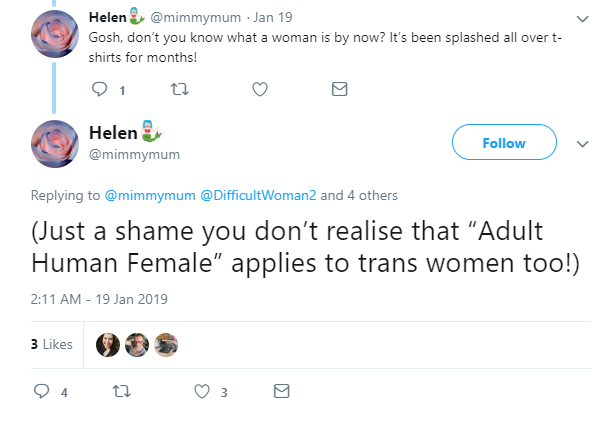Stereotypes of the “wrong” kind of woman to be are a powerful tool for enforcing expected social norms on female behavior.
If you’re talking to anyone on the left, the “wrong” kind of woman can be summed up as something looking a bit like this:
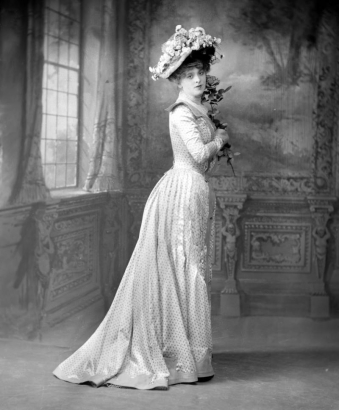
The Victorian woman, in the view of the modern left, represents everything a woman ought not to be.
Decorative and demure, she defers to her husband due to a lack of understanding of difficult or complex matters. She eats little, and maintains a snow-white complexion by staying indoors at all time. She stands staunchly against the suffragettes in her restrictive clothing, mocking the “bloomers” of her more forward-thinking peers.
The Victorian woman, in the popular imagination, is a creature of hysterical fits and feminine complaints. She is unable to discuss difficult realities even with her closest friends and confidants, because she has been kept so isolated from the world that even the mysteries of her own body are beyond her.
This lack of education, of course, results in the characteristic most despised in the Victorian woman stereotype: her famed prudishness.
Her restrictive corset acts, in our understanding of this woman, as a physical expression of a completely internalized, repressed sexuality (that yearned to breathe free). Her contorted spine mirrors what we believe to be a stunted form of development, free of expression of desire.
Indeed, the prudishness of the Victorian woman is even supposed to reflect on modern political struggles: she is invoked as a grim-faced, disapproving specter of the past, whose ignorance of anatomy (and unpredictable attacks of the vapors) necessitated separate toileting and changing facilities for men and women. In the view of the modern left, desegregating the sexes is merely rectifying the wrong committed in the name of these prim, fragile ladies of leisure.
That was her stereotype. This is an attempt to find something closer to her truth.
First (and I would think this would be self-evident, but you wouldn’t know it from the popular perception of “the Victorians”), the vast majority of women didn’t live that way.
There were no silk skirts sashaying from wallpapered room to room for the overwhelming majority of non-white women in the West (or anywhere else, for that matter). Even the huge majority of white women spent their lives working. Some worked in factories, while others worked at home, both on the incredible amount of labor required to maintain a household at that time, and with various types of piecework that gave them the “pin money” necessary to participate in commerce.
But let us say that we are speaking, in the stereotype, only of the middle- and upper-class women who were the expected consumers of millinery, yellow wallpaper, and the like.
What of these women?
Well, let us start by asking, what of these women:
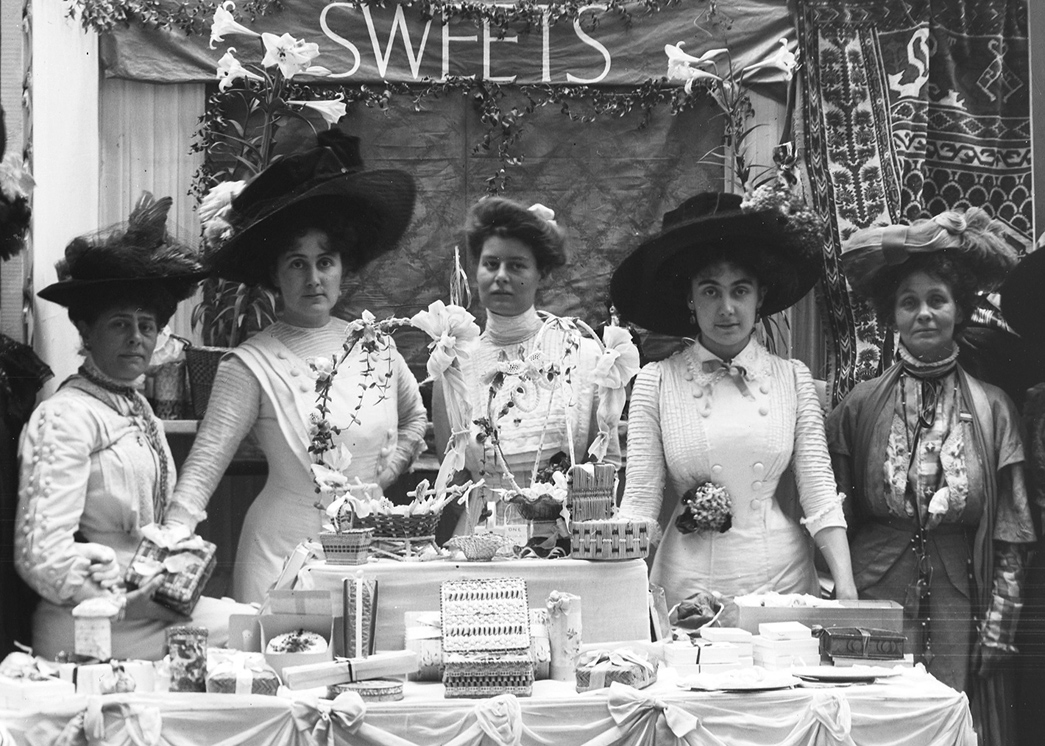
See the horsehair buttons, the S-shaped corsets, the humorless faces, the frilly decorations surrounding a bake sale. Here, we have truly reached the apex of retiring Victorian femininity.
Except for one thing: they were selling sweets … as a fundraiser for women’s suffrage. The women fighting for women’s right to vote didn’t just wear unrestrictive dresses and bloomers. They did what many oppressed people from many civil rights struggles have done: they wore what they were expected to wear, in hopes of not having their concerns dismissed.
As for those campaigners for separate facilities for men and women, they weren’t arguing from a position of a previous utopia where women were allowed access to unisex facilities. Rather, they were arguing in favor of the basic inclusion of women in full public life: until these facilities existed, women simply did not leave the home for long enough to require restroom facilities, unless she had a carriage in which to relieve herself.
These facilities offered women an unprecedented ability to engage in public … which directly resulted in the ability of suffragists to organize the first women’s movement.
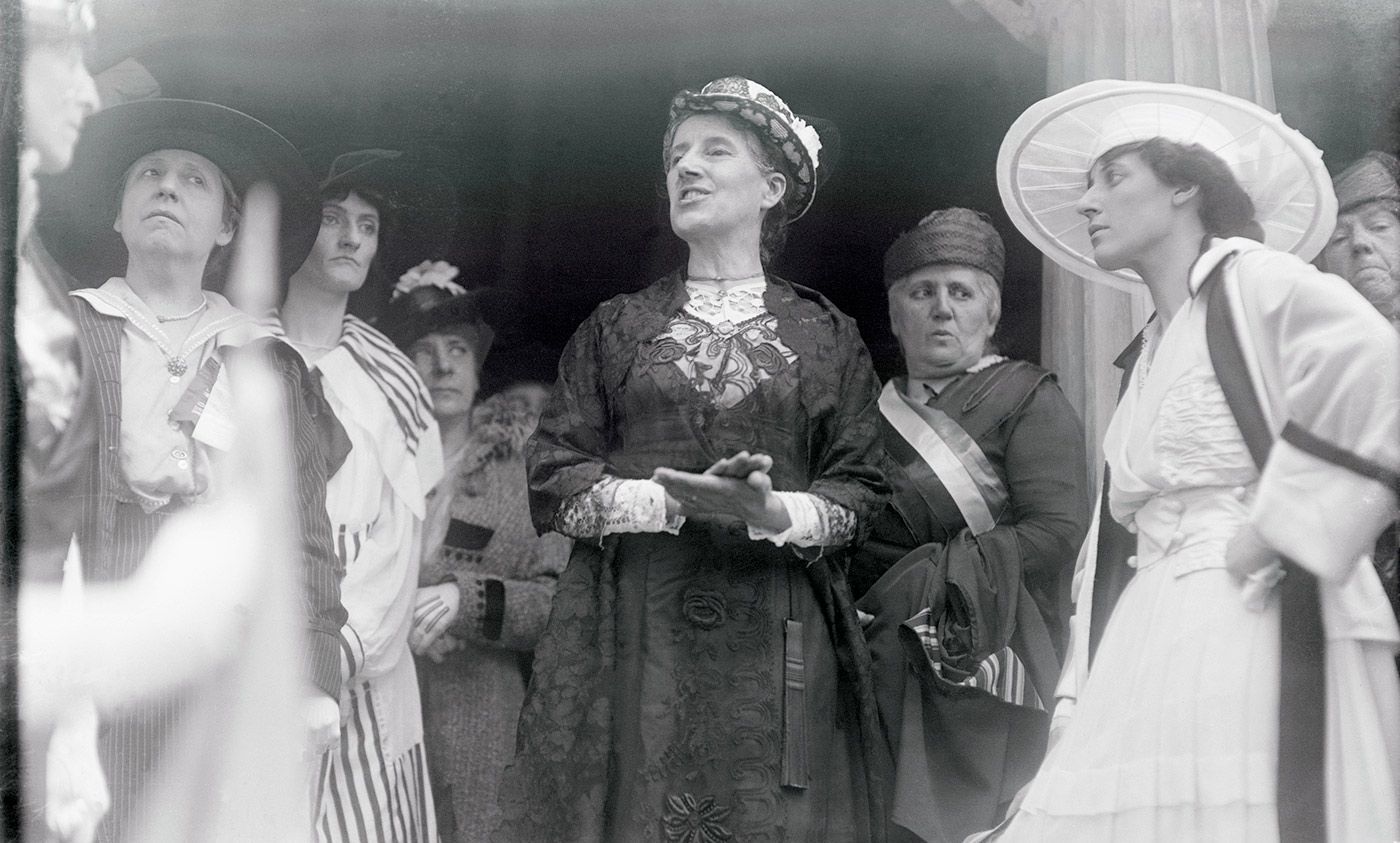
The stuffy, straitlaced Victorian matron pictured above (center, in black lace) is Charlotte Perkins Gilman, visionary feminist writer. In addition to granting a unique first-person perspective on her psychological victimization by Victorian “hysteria cures” in her most famous work, The Yellow Wallpaper, she also wrote feminist utopian fiction that is still relevant today.
It is impossible to tell from a photograph of a buttoned-up Victorian woman whether she was in favor of suffrage or women’s rights.
And what of that famous repression?
It is impossible to understand Victorian women’s attitudes toward sex without a comprehension that in the Victorian era, sex was more dangerous than it had ever been, especially for the exact women most famed for their prudishness.
Childbirth was the leading cause of adult female death in the Victorian era, a situation that was significantly worse than in previous centuries.
Deprived of sun exposure in order to keep her skin pale (or, in the lower classes, due to the recent invention of factory work that trapped them indoors 12+ hours a day), the Victorian woman suffered from rickets more than women of previous or subsequent generations. Rickets impacted the bones most profoundly, creating pelvic outlets that were sometimes no wider than a silver dollar.
With bodies twisted by daily wear of restrictive garments, the Victorian woman faced pregnancies that were difficult to maintain. Social mores of the time dictated that visibly pregnant women were to be kept at home, in “confinement.” Deprived of exercise and outdoor activity during pregnancy, the worst was yet to come.
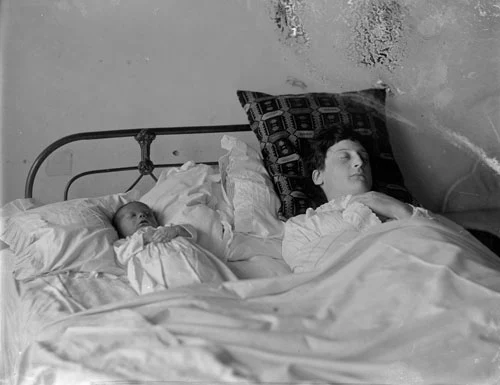
The photograph above depicts the aftermath of the most dangerous killer of Victorian women: “puerperal fever,” or childbed fever. Caused by a lack of obstetric hygiene (doctors routinely practiced on multiple pregnant women without handwashing, even after they had just handled a corpse), this fever claimed the lives of up to 1/3 of birthing women at leading obstetric hospitals in the late 19th century. Larger, more crowded hospitals caused this sickness to rise in incidence throughout the 19th century, and it would not be fully eradicated until the emergence of antibiotics.
Obstetric hemorrhage was another major concern, and most physicians of the time were inadequate to solve this common complication. While some midwives had remedies that helped a number of women, these remedies were typically dismissed in more professional medical contexts, which led to higher mortality rates in hospitals than at home.
The use of anesthetics during labor was pioneered on the ultimate Victorian woman, Queen Victoria herself. However, these anesthetics required more forceps deliveries, which represented a significant danger to both mother and child.
For women hoping to prevent or abort an unwanted pregnancy, the options were far from ideal. Cleaning fluids were advised as contraceptive douches, but the manufacturers had to cloak their advertisements in benign language to avoid trouble from the authorities.

Abortions, conducted secretly with caustic substances (typically said to “restore female regularity”) or foreign objects, resulted in hemorrhage, infection, and death at rates that gave birth a run for its money. What an irony, then, that the women accused of having so little knowledge of their own bodies and sexuality were so intimately familiar with sexually invasive methods of contraception and abortion — but no one ever thinks of the contradiction of the women who supposedly don’t know about vaginas and cervixes nevertheless managing to douche with Lysol, or insert a foreign object with which to open their own cervical os.
Abstinence, of course, is a full pregnancy preventative, but no woman in the world could claim in Victorian times that she had been “maritally raped.” The concept did not yet exist, and men’s legal rights to a woman’s body and sexuality in the context of the marital relationship were nearly boundless.
In fact, the husband’s rights extended to complete ownership and custody of all children born from the relationship. If he chose to separate from his wife, he had every right to take the children and leave her financially ruined. Of course, he could also simply leave the children with her and vanish, with no child support enforcement, which typically led women to turn to prostitution or factory work to make ends meet.
This is the context of Victorian female sexuality. From conception to postpartum, and even beyond, the Victorian woman’s life is positively ruled by sexuality and its results. Sex was the most dangerous activity engaged in by Victorian women, and it showed in the attitudes of women of that time.
These were the real fears of Victorian women. Childbirth-related mortality touched everyone, from every class. Before they birthed, every woman had known women who hadn’t made it through the process. Terror kept pregnant Victorian women awake at night, writing letters to relatives they worried they would never see again as they faced their “travail” of childbirth.
But all this is largely ignored today. The Victorian woman is a target of mockery and derision for her unwillingness to act playful and coquettish about sexuality — for refusing, in other words, to act like sex was no big deal, although even a single act of intercourse could foreseeably lead to her death.
We have much evidence that Victorian women were concerned about sex: with how to stop men from wanting it so frequently, with how to avoid it in their own personal lives, and with minimizing the negative impacts of male sexuality on female lives. Many first-wave feminists opposed legal abortion because they saw it as giving males free rein to have sex with their wives, even when they did not want children — without the right to refuse sex in marriage, abortion gave husbands the right to endanger their wives’ lives and health as frequently as they liked, without fear of personal repercussions.
What there is much less evidence for, is the notion that women of Victorian times were particularly repressed, which is to say, the fanciful notion that there was a boiling undercurrent of red-hot sexuality simply waiting to bubble up under the surface of each tight-laced corset, rendering women psychologically confused and making them ill with somatoform disorders.
Our notion of the secretly-sultry Victorian comes from male writers like D.H. Lawrence, whose Lady Chatterley became an oft-censored symbol of Victorian hypocrisy and passion. It was men writing the florid tales of female desire, in an era when women (who had recently begun to enter institutions of higher education at higher rates than ever before in history) wrote female characters whose motivations were not primarily sexual. Even relatively sexually-charged Victorian content written by women, like the work of Mary MacLane, speaks to a focus on romance and companionship over raw sexual intimacy.
Why the discrepancy? Perhaps because men in Europe and the United States had, for centuries, claimed (without much evidence) that women were the sexually rapacious sex, that women’s sexuality was constantly highly charged, and that women constantly engaged in acts of “luring” men into immorality. Classic authors like Chaucer, Dante, and Shakespeare engaged with this idea in some of the works of classical literature that would have been consumed by any male writer of Victorian times.
The notion that women might not want sex all the time was a very radical one, and a very feminist one, for the 19th and early 20th centuries. The lack of marital rape laws in previous centuries, and the punishment of rape victims instead of rapists, was a direct result of believing that women were always — always — in a state of sexual desire. Women who acted like they did not want sex were thought to be engaged in a bit of play-acting to preserve a socially-acceptable veneer of modesty.
This idea was carried through into masculine literature of the Victorian era. When women started simply saying “no” more often — “no” to getting married, “no” to letting men cast all the votes, “no” to bearing children in an era where the odds of survival were no better than Russian roulette — male writers simply refused to accept that they meant it.
By way of explanation, they concocted Lady Chatterley, and all the other stereotypes of Victorian female eroticism that threatened to burst through whalebone and silk. They created a woman whose “no” was simply a social nicety, whose secret desires overrode her stated ones.
The stereotyping of the Victorian woman, then, is patriarchy whistling the same jaunty tune as ever: Women’s fears are unfounded “prudery,” and women’s “no” is a result of deeply-hidden secret desire — which carries a mysterious, erotic charge.
It’s time to stop looking at the Victorian woman from the gaze of the men who confined her, raped her, shamed her, kept her a non-voter and an invalid imprisoned in her home. They deserve much better from feminists than to be used as an example of “prudes,” rather than one of the first generations of women to feel strong enough to say “no.”
